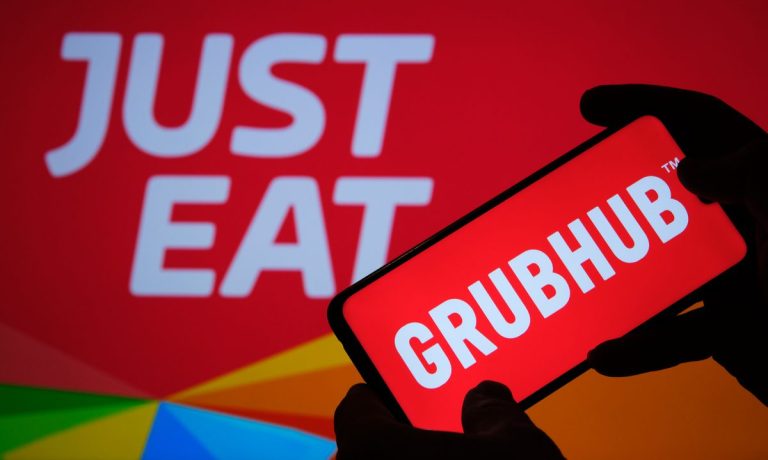Just Eat Takeaway Explores Sale of Grubhub as US Competitors Pull Ahead

It would appear that Just Eat Takeaway’s Grubhub bet is not paying off. In a trading update Wednesday (April 20), the Netherlands-based company announced that it is “actively exploring” the possibility of a partial or full sale of the Chicago, Illinois-based aggregator or bringing in a strategic partner.
Read more: Just Eat Takeaway Could Offload Grubhub as Demand Drops
“Our priority for 2022 lies in enhancing profitability and strengthening our business,” Just Eat Takeaway CEO Jitse Groen said in a statement. “We expect profitability to gradually improve throughout the year, and to return to positive adjusted EBITDA in 2023.”
Just Eat Takeaway initially announced its acquisition of Grubhub in 2020, and the deal closed in June 2021.
See more: Grubhub Stockholders Approve Acquisition by Just Eat Takeaway
In February, Groen denied speculation that the company was looking to sell off the U.S. aggregator. Now, just 10 months after acquiring Grubhub and two months after denying the rumors, Just Eat Takeaway has changed its tune.
Read more: Takeaway.com Chief Denies Plan to Sell Grubhub
Certainly, Grubhub underperforms relative to other leading aggregators in the United States, according to data from the March/April edition of PYMNTS’ Digital Divide series, “The Digital Divide: Regional Variations in U.S. Food Ordering Trends and Digital Adoption,” created in collaboration with Paytronix.
See more: New Research Shows That Regional Dining Quirks Matter in Tailoring Restaurant Offers
The study, which drew from a February survey of more than 2,500 U.S. adults, found that, of the 32% of consumers who had used an aggregator in the previous 30 days, 71% had used DoorDash, and 48% had used Uber Eats. In contrast, only 41% had used Grubhub. Specifically, the data showed that, while Grubhub is popular in the Northeast and has a sizable following in the Pacific region, consumers in the rest of the country have been slower to get on board.
When it comes to operating a restaurant aggregator, there is little room for underperformance, given the high cost of the model. Delivery is time-intensive, and when consumers are placing orders as small as, say, a single burrito, the economics get tricky, especially when aggregators rely on frequent, costly promotions to drive adoption.
In the early stages of the pandemic, some of these challenges were mitigated by the widespread demand. Many restaurants did not yet have their own digital presences, and so consumers turned to third parties to get their food needs met online. While this is still sometimes the case, restaurant customers generally have more choices today.
Research from PYMNTS’ 2022 Restaurant Friction Index, also created in collaboration with Paytronix, found that 38% of consumers who order via aggregator reported doing so because it is the only way they can have food delivered from their restaurant of choice. However, of the group that does not use aggregators (the majority), 41% said that they are unwilling to pay the delivery or service fee, and 35% said they prefer restaurants’ direct channels.
Read more: Loyalty Programs Best Way to Get Diners to Spend More